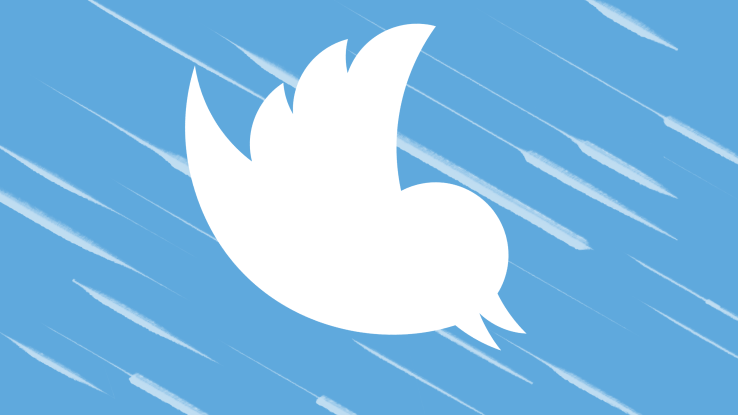
Remember Twitter?
Or, at least, that would seem to be the sentiment from parts of Twitter that are now shocked that the company is considering switching to an algorithmic timeline, according to a BuzzFeed report.
Everyone panic! This changes everything! Twitter will never be the same. #RIPTwitter. There’s even a top trending hashtag for it.
Update: CEO Jack Dorsey said in a Tweetstorm that the company did not plan to re-order timelines next week. In his Tweetstorm he emphasized that Twitter is still focused on real-time communication. His Tweetstorm follows:
Hello Twitter! Regarding #RIPTwitter: I want you all to know we’re always listening. We never planned to reorder timelines next week.
— Jack (@jack) February 6, 2016
Twitter is live. Twitter is real-time. Twitter is about who & what you follow. And Twitter is here to stay! By becoming more Twitter-y.
— Jack (@jack) February 6, 2016
Look at “while you were away” at the top of your TL. Tweets you missed from people you follow. Pull to refresh to go back to real-time.
— Jack (@jack) February 6, 2016
I *love* real-time. We love the live stream. It’s us. And we’re going to continue to refine it to make Twitter feel more, not less, live!
— Jack (@jack) February 6, 2016
Twitter can help make connections in real-time based on dynamic interests and topics, rather than a static social/friend graph. We get it.
— Jack (@jack) February 6, 2016
Thank you all for your passion and trust. We will continue to work to earn it, and we will continue to listen, and talk!
— Jack (@jack) February 6, 2016
But before jumping to any conclusions, there are a few key elements to this. First, and potentially most importantly, is this is something that we don’t know what it looks like yet. Will Twitter force this onto users or not? That’s not specified in the report, and then there’s this, from one of Twitter’s head comms people (which is also great):
BREAKING: Tech Company may launch something, may or may not do certain things, but we don’t really know anything for sure. ¯_(ツ)_/¯
— Jim Prosser (@jimprosser) February 6, 2016
Second, Twitter already has elements of algorithmic suggestions in its feed in the form of While You Were Away. These are generally surfaced when you haven’t logged in to Twitter for a while, and honestly, they’re great. It’s a good way to get a snapshot of what people are talking about, whether that’s newsy elements or silly tweets from other people that you’re following.
This is also something Twitter has been grappling with for years, and it’s something we’ve heard about all the way back to September 2014. This is certainly an element that Twitter has been trying to reconcile — whether or not to keep its reverse-chronological chaotic firehose or tone it down for something that’s more palatable.
Twitter, realistically, has been mucking around with the timeline for some time now. Beyond While You Were Away, the company changed the “fave” button into a “like” button, and there are quoted tweets that can be embedded within other tweets in favor of a pure retweet. Then there’s the report that Twitter will also lift its 140-character limit. All this seems designed to help Twitter users get a better handle on the service earlier on, meaning they’ll find better use cases and want to come back and log in more often.
Finally, this is probably something users — especially new users — want and need. Twitter by itself is a confusing service, especially when getting started. It’s great for getting real-time updates to news events, but it’s hard to sort out the most important tweets from the noise whenever a huge event (like the upcoming Super Bowl) goes down. The result of such a difficult service to grapple, inevitably, is fewer users sign up and log in.
Twitter is in desperate need of a shift in their product strategy if they’re going to re-ignite user growth. We’ve hammered this point away time and again. If this experiment was as successful as the report indicates that the company may roll it out to a larger swath of its users, it seems like a pretty clear signal that people want to use something like this.
The company needs that logged-in user base to continue growing, because it can do a better job of targeting ads against them based on the interests they follow. Sure, there are a huge number of logged-out users that use the service, but it’s tough building effective advertising and monetization tools for users that have given very few signals to Twitter.
Related Articles
Twitter Is Testing A Dedicated GIF Button On MobileTwitter Starts Taking Its Logged-Out Users SeriouslyTo Fight Clickbait, Facebook’s Feed Prioritizes What Surveys SayThe Great White Fail Whale
For better or worse, all this has fallen on the shoulders of CEO Jack Dorsey, who is also running Square. Under Dorsey, Twitter shares have cratered as the company has struggled to ignite new user growth. That has a lot of damaging effects on a company, with perhaps the biggest one crushing employee morale — whose value at the company is often tied to a share price.
Twitter’s history of experimentation even extends to its management team. The company recently saw the departure of (another) top product lead, as well as a slew of other executives. This isn’t the first time there’s been a shakeup at the top, and the company even saw its chief operating officer Ali Rowghani leave the company amid stalling user growth. And then, of course, there’s the departure of former CEO Dick Costolo.
For Dorsey, it seems like now is the time to try something new — even if it means ripping parts of the guts out of a service in order to give it a go.
And of course, there’s always Tweetdeck.
Featured Image: Bryce Durbin
